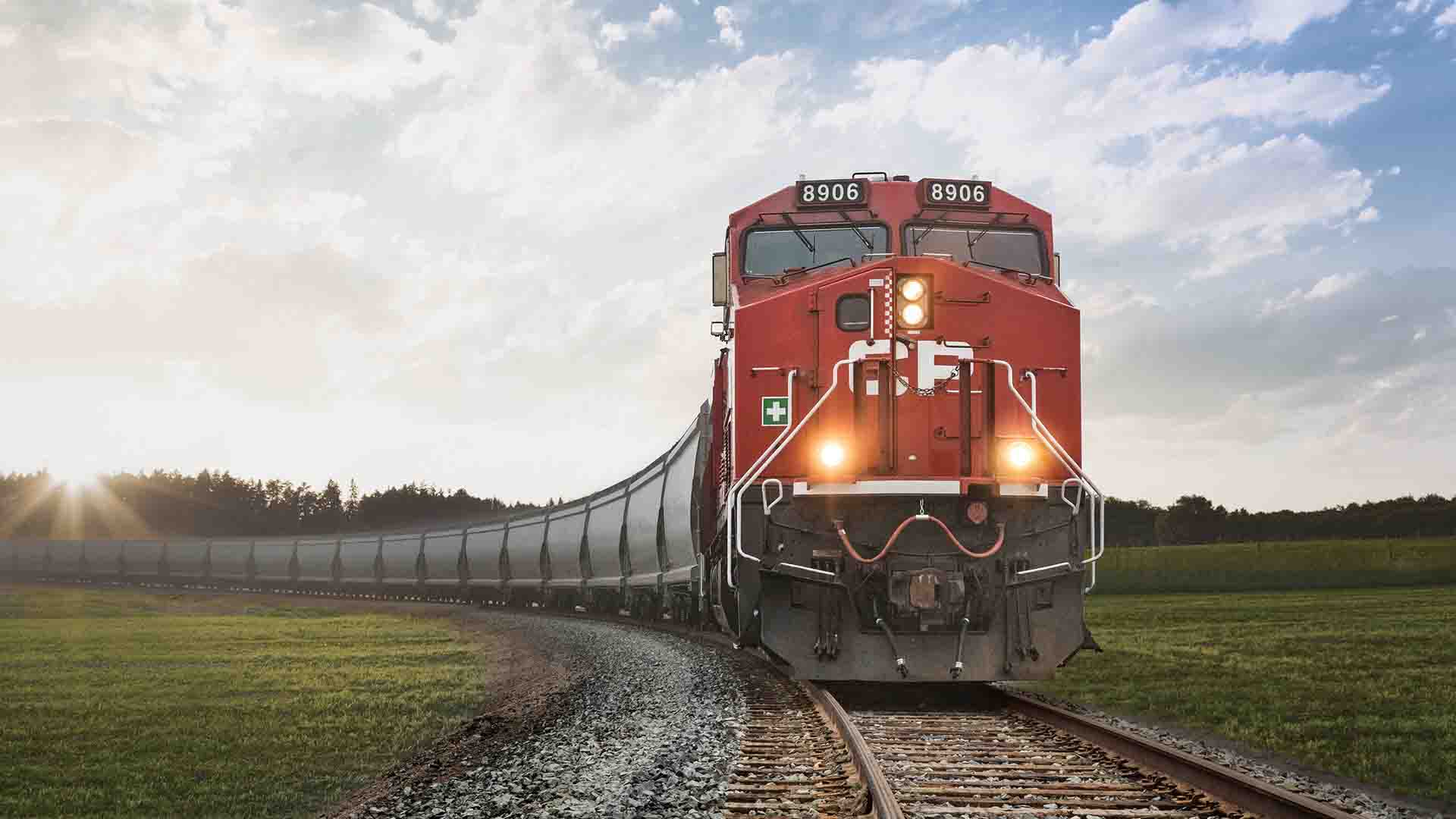| | | | | | | Presented By Canadian Pacific | | | | Axios Markets | | By Dion Rabouin ·May 06, 2021 | | Good morning! Was this email forwarded to you? Sign up here. (Today's Smart Brevity count: 1,220 words, 4.6 minutes.) Situational awareness: Shares of companies that make COVID-19 vaccines around the world dropped in overnight trading following news that leaders from the U.S., China and the EU are open to waiving intellectual property protections for the vaccines. (Bloomberg) 🎙 "I hope that it isn't as bad as I made it sound at the very beginning." - See who said it and why it matters at the bottom. | | | | | | 1 big thing: The suborbital space race heats up |  | | | Illustration: Aïda Amer/Axios | | | | Axios Miriam Kramer writes: Blue Origin and Virgin Galactic are pushing to launch their first paying customers to the edge of space. Why it matters: If the two companies succeed, it will open up a new market in the space industry, one focused on consumer-driven demand for expensive trips to suborbital space. Driving the news: Jeff Bezos' space company Blue Origin is planning to launch its first crewed flight on July 20. - One seat aboard the spacecraft is now being auctioned off to the highest bidder, with five other passengers not yet announced.
- Blue Origin is still being tight-lipped on how much a typical seat onboard its New Shepard space system will cost, but Virgin Galactic's cost about $250,000.
The intrigue: Virgin Galactic went public via SPAC in 2019 and quickly became popular among traders as the first public human spaceflight company. - Recently, however, the company's stock has fallen in part due to delays in testing the space plane and stock selloffs by Richard Branson and Chamath Palihapitiya, who helped take the company public.
- Blue Origin is not public, and Bezos reportedly has sold about $1 billion worth of Amazon stock per year to support the venture.
- Going public via SPAC has become an attractive option for a number of space companies, in part because getting a space company functioning at a high level often involves a huge influx of upfront capital and a long development timeline.
The big picture: In 2019, Northern Sky Research predicted the suborbital and orbital tourism markets may be worth up to $14 billion in revenue by 2028. - That's a relatively small amount of revenue compared to the satellite manufacturing and launch business — which NSR predicts will be worth $478 billion by 2029 — but experts think that space tourism could do wonders for the space industry at large, bringing more visibility and popularity to it.
Sign up for Miriam's Axios Space newsletter here. |     | | | | | | 2. Catch up quick | | The Department of Justice says it plans to appeal a judge's ruling striking down the national eviction moratorium and also will seek a stay of the decision. (CNBC) Senior White House officials have highlighted inflation and labor availability challenges as potential areas for concern in conversations with the president's economic team. (Washington Post) President Biden blocked a Trump-era rule making it easier to classify gig workers as independent contractors. (WSJ) Dogecoin surged by nearly 40%, briefly touching an all-time high of 69 cents Wednesday morning. The joke cryptocurrency has gained more than 12,000% since the start of the year. (CNBC) |     | | | | | | 3. Teetering on the edge, small businesses get another lifeline |  | | | Illustration: Aïda Amer/Axios | | | | Following the news that the Paycheck Protection Program had run out of funding and stopped accepting most new applications, the White House unveiled data for its $28.6 billion Restaurant Revitalization Fund (RRF), which it said saw "extremely high demand." Why it matters: Small businesses play an important role in the U.S. economy and many, especially those in the services sector like restaurants and bars, are still struggling with a disproportionate number forced to close for good because of revenue losses from the pandemic. What's happening: There has been "a slow recovery of the small business services sector, with a substantial fraction of businesses still closed," a report released Wednesday by the New York Fed finds. - "While employment has partially recovered as businesses reopened, currently closed businesses still account for a 25 percent drop in employment relative to February 2020."
The big picture: Businesses that have been closed for a long time are unlikely to reopen and those that do are likely to hire only a small percentage of the workers back, the NY Fed's analysis found. - That will reduce employment gains, consumer spending and GDP growth.
What we're reading: "The data reveal that 35 percent of businesses that were active prior to the pandemic are still closed and that most have been inactive for twenty weeks or longer," the NY Fed's research analysis of data from Homebase reports. - "We estimate that each additional week of being closed reduces the probability that a business reopens by 2 percentage points. Moreover, an additional week of business closure lowers the share of workers that are rehired at reopening."
- "Our estimates imply that only about 4 percent of the workers that are still laid off from the currently closed businesses will eventually be rehired by these businesses."
By the numbers: In its first two days, the White House says 186,200 restaurants, bars, and other eligible businesses across the country applied for relief. - 97,600 applications came from restaurants, bars and other eligible businesses owned and controlled by women (46,400), veterans (4,200), socially and economically disadvantaged individuals (30,800) or some combination of the three (16,200).
- Such businesses, which were disproportionately impacted during the pandemic, will receive priority for funding during the first three weeks of the program.
- 61,700 applications came from businesses with under $500,000 in annual pre-pandemic revenue.
One level deeper: Restaurants and bars are "eligible for grants equal to their pandemic-related revenue loss, with a cap of $10 million per business and $5 million per location," the White House said. - The funds must be used by March 2023 and do not need to be repaid provided the money is used for eligible expenses like payroll, suppliers, mortgages, maintenance and rent — making it far broader than the PPP.
|     | | | | | | A message from Canadian Pacific | One railroad connecting
U.S.-Mexico-Canada | | |  | | | | A Canadian Pacific transaction offers greater certainty for stockholders and creates more rail competition for shippers. Remaining the smallest Class 1 railroad, a combination with CP appropriately manages regulatory risk and creates significant benefits for customers and stakeholders. | | | | | | 4. SEC chair Gensler hints at tougher rules after GameStop mania | | Axios' Courtenay Brown writes: SEC head Gary Gensler hinted that tougher rules could be coming after the wild Reddit trading saga thrust practices like payment for order flow and trading gamification into the spotlight. What they're saying: "Many of our regulations were largely written before these recent technologies and communication practices became prevalent ... we may find that we need to freshen up our rule set," Gensler plans to tell the House Financial Services Committee today. Catch up quick: The meme stock phenomenon is back on full display on Capitol Hill — the third in a series of hearings. - The heads of clearinghouse DTCC and the Financial Industry Regulatory Authority will also testify — both speaking out publicly on this issue for the first time.
The bottom line: The Reddit hype may have died down (see: poster meme stock GameStop, down 54% from its peak in January) — but regulators want to figure out what, if anything, needs to change. |     | | | | | | 5. IBM says it has produced world's first 2-nanometer chips | | Axios' Ina Fried writes: IBM announced today it has reached a milestone in semiconductor manufacturing, producing chips with wiring just 2 nanometers thick. Why it matters: Chips with thinner wiring typically consume less power and boost performance, while also taking up less space, reducing cost. The IBM process is still a couple of years from being ready for full-scale manufacturing. With wiring this thin, IBM says it can fit 50 billion transistors into a chip the size of a human fingernail. Or, put another way, 2 nanometers is smaller than the width of a single strand of human DNA. - IBM says that, compared to today's leading-edge chips with 7-nanometer wiring, the 2-nanometer chips can improve performance by 45% using the same amount of power, or use 75% less energy while maintaining the same performance level.
The big picture: The advance also comes amid increased interest in boosting American chip manufacturing, which is seen as necessary for both national security and economic competitiveness. - A global chip shortage has further highlighted the benefits of the U.S. having its own domestic capacity.
- Intel has recently recommitted to continuing in-house chipmaking and vowed to invest billions at chipmaking plants in Arizona, New Mexico and Israel.
Meanwhile: IBM CEO Arvind Krishna is also releasing a new policy agenda that includes support for the Endless Frontier Act, a bill that would change the approach of the National Science Foundation to focus on helping bridge the gap between academic research and commercial technology. What's next: IBM says it will work with chipmakers that want to use its 2-nanometer technology in their future manufacturing processes. Sign up for Ina's Axios Login newsletter here. |     | | | | | | A message from Canadian Pacific | One railroad connecting
U.S.-Mexico-Canada | | |  | | | | A Canadian Pacific transaction offers greater certainty for stockholders and creates more rail competition for shippers. Remaining the smallest Class 1 railroad, a combination with CP appropriately manages regulatory risk and creates significant benefits for customers and stakeholders. | | | | Thanks for reading! Quote: "I hope that it isn't as bad as I made it sound at the very beginning." Why it matters: On May 6, 1937, the German airship known as the Hindenburg exploded in flames in Lakehurst, New Jersey, killing 35 of the 97 onboard and another person on the ground. - One of the most famous broadcasts in the history of radio journalism was Chicago radio station WLS' Herb Morrison's 1937 eyewitness report of the explosion:
- "It's fire and it crashing! . . . This is the worst of the worst catastrophes in the world! Oh, it's crashing . . . oh, four or five hundred feet into the sky, and it's a terrific crash, ladies and gentlemen. There's smoke, and there's flames, now, and the frame is crashing to the ground, not quite to the mooring mast. Oh, the humanity, and all the passengers screaming around here!"
- Morrison had to sign off temporarily and later returned to the air with the above quotation.
************** This newsletter is written in Smart Brevity®. Learn how your team can communicate in the same smart, clear style with Axios HQ. | | | | Axios thanks our partners for supporting our newsletters.
Sponsorship has no influence on editorial content. Axios, 3100 Clarendon Blvd, Suite 1300, Arlington VA 22201 | | | You received this email because you signed up for newsletters from Axios.
Change your preferences or unsubscribe here. | | | Was this email forwarded to you?
Sign up now to get Axios in your inbox. | | | | Follow Axios on social media:    | | | | | |
No comments:
Post a Comment